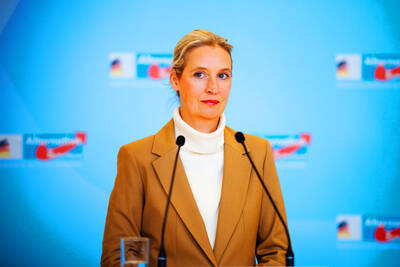Spain was on Friday bracing for its biggest ever outdoor drinking party, with tens of thousands of young people expected to show up nationwide to guzzle hard liquor, wine and beer overnight.
Thousands of police were preparing for the event known as macro-botellon, which had been arranged anonymously through cell phone and internet messages with some 20 cities vying for which one would draw the largest number of people to get drunk at squares or parks.
The event was based on a practice known as botellon (from the word botella meaning bottle), which has evolved in Spain over the past decade.
It basically consists of youths, mainly between 15 and 24 years of age, gathering outdoors to drink together.
They often make so much noise it keeps locals from sleeping at night and leave behind a mess of garbage, vomit pools, glass shards and graffiti.
The disturbance has prompted some cities, such as Madrid and Barcelona, to prohibit such drinking outdoors and to impose fines of up to 30,000 euros (US$36,500) on those who break the rule.
Yet the threat of police repression did not impress the anonymous people who launched the call for the macro-botellon in the southern city of Granada in an attempt to outdo Seville, where a street bash of more than 3,000 youngsters made national headlines a month ago.
The party call quickly spread to other cities, alarming Spanish Health Minister Elena Salgado who called it an "attack against health" and urged parents to keep under-age teenagers from attending such events on Friday night.
The young practitioners of the botellon say they drink out of doors simply because it is too expensive to do so in bars or discotheques.
Analysts say the botellon also reflects a certain change in drinking habits in Spain, where people traditionally sipped wine with meals while youths are now turning to Nordic-style heavy drinking.
Studies show that 38 percent of people aged between 14 and 18 years drink alcohol regularly in Spain. Girls drink as much as boys, and the number of youngsters drinking is on the increase.
More than just an expression of teenage rebelliousness, the botellon has also been described as a deeper symptom of ill-ease in a consumerist culture where young people are expected to spend money on concerts, movies and other forms of leisure.
Some say massive drinking is a form of protest typical of a permissively raised generation looking for "easy and cheap transgression," in the words of Antoni Gual, a Barcelona physician specialized in health troubles caused by excessive alcohol consumption.

A feud has broken out between the top leaders of the far-right Alternative for Germany (AfD) party on whether to maintain close ties with Russia. The AfD leader Alice Weidel this week slammed planned visits to Russia by some party lawmakers, while coleader Tino Chrupalla voiced a defense of Russian President Vladimir Putin. The unusual split comes at a time when mainstream politicians have accused the anti-immigration AfD of acting as stooges for the Kremlin and even spying for Russia. The row has also erupted in a year in which the AfD is flying high, often polling above the record 20 percent it

Philippine President Ferdinand Marcos Jr yesterday vowed that those behind bogus flood control projects would be arrested before Christmas, days after deadly back-to-back typhoons left swathes of the country underwater. Scores of construction firm owners, government officials and lawmakers — including Marcos’ cousin congressman — have been accused of pocketing funds for substandard or so-called “ghost” infrastructure projects. The Philippine Department of Finance has estimated the nation’s economy lost up to 118.5 billion pesos (US$2 billion) since 2023 due to corruption in flood control projects. Criminal cases against most of the people implicated are nearly complete, Marcos told reporters. “We don’t file cases for

Ecuadorans are today to vote on whether to allow the return of foreign military bases and the drafting of a new constitution that could give the country’s president more power. Voters are to decide on the presence of foreign military bases, which have been banned on Ecuadoran soil since 2008. A “yes” vote would likely bring the return of the US military to the Manta air base on the Pacific coast — once a hub for US anti-drug operations. Other questions concern ending public funding for political parties, reducing the number of lawmakers and creating an elected body that would

‘ATTACK ON CIVILIZATION’: The culture ministry released drawings of six missing statues representing the Roman goddess of Venus, the tallest of which was 40cm Investigators believe that the theft of several ancient statues dating back to the Roman era from Syria’s national museum was likely the work of an individual, not an organized gang, officials said on Wednesday. The National Museum of Damascus was closed after the heist was discovered early on Monday. The museum had reopened in January as the country recovers from a 14-year civil war and the fall of the 54-year al-Assad dynasty last year. On Wednesday, a security vehicle was parked outside the main gate of the museum in central Damascus while security guards stood nearby. People were not allowed in because